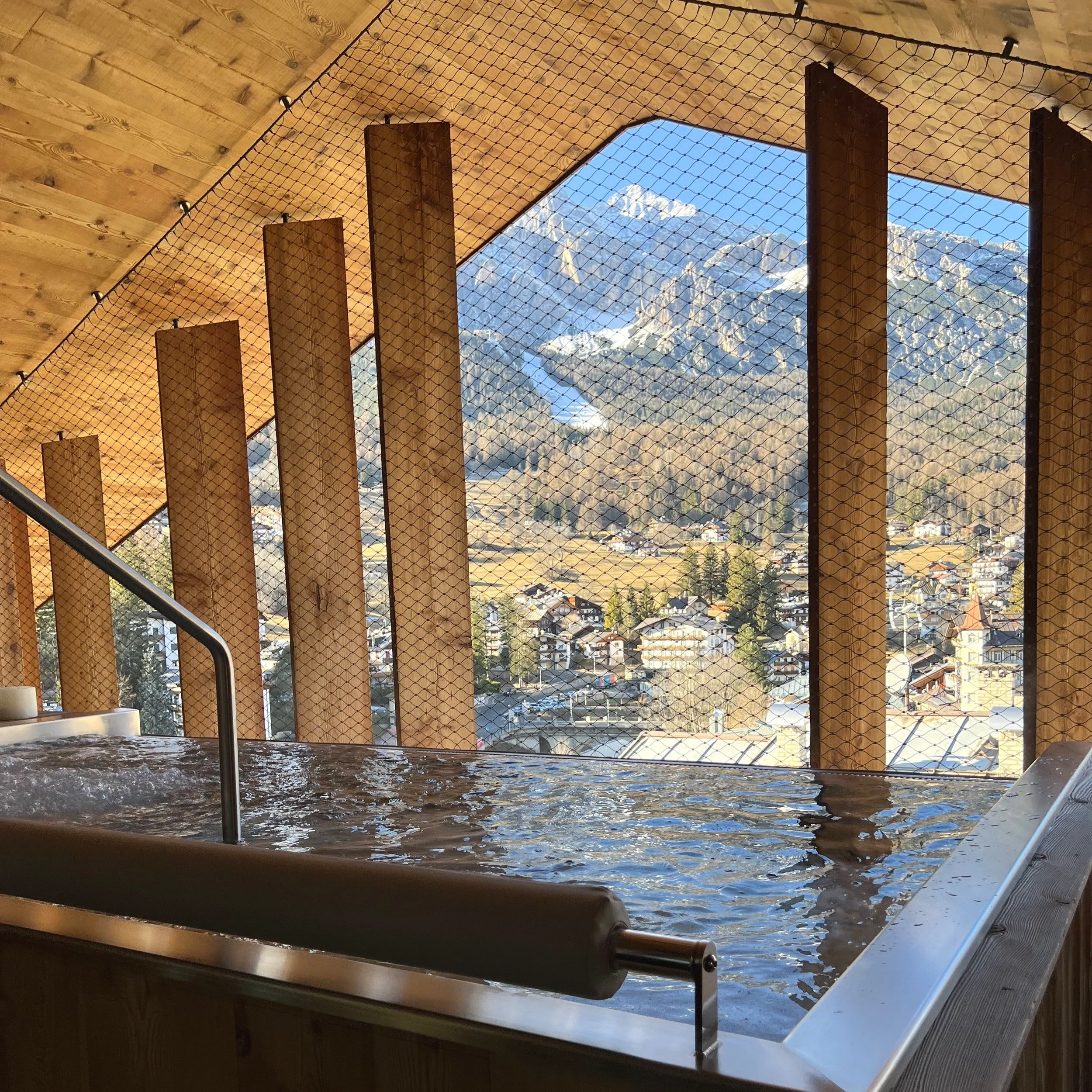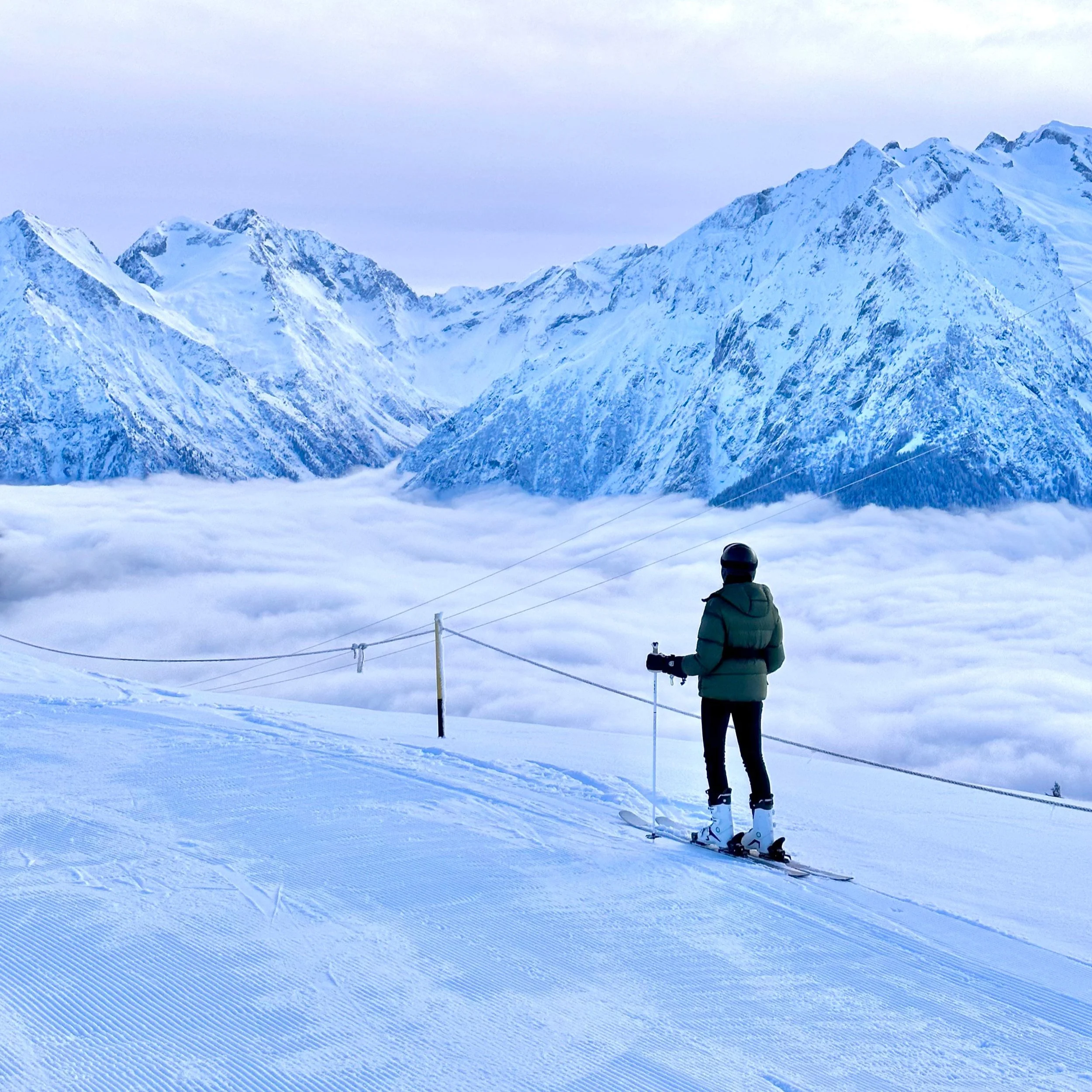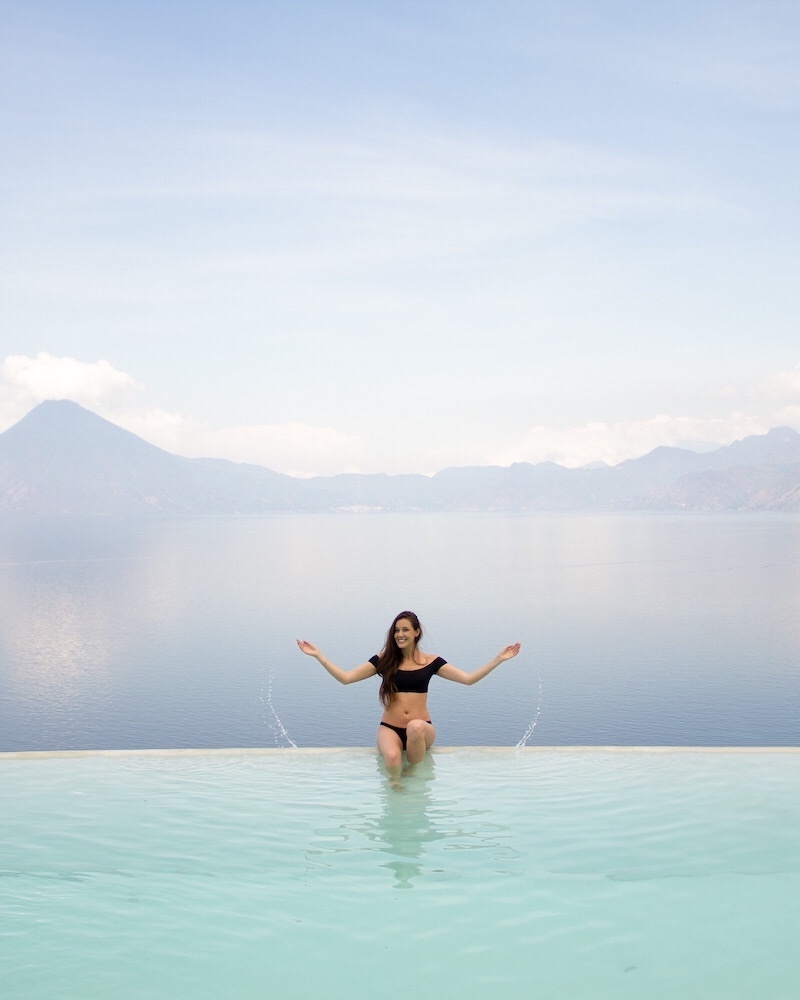How to Start Skiing Black Runs Safely and Confidently
/This last spring I celebrating the 10th anniversary of the first day I ever attempted skiing, and the 4th anniversary of my decision to take the sport seriously. I’m grateful that I’ve been able to improve considerably in a relatively short amount of time, and in my first season of taking the sport seriously, I was able to progress to confidently skiing black pistes. I have since skied over 50+ stations across 8 countries, and some of the iconic black pistes I’ve skied in France include Le Tunnel and Sarenne in Alpe d’Huez, La Face in Val d’Isère, Chamois in Argentière, and Aiguille Rouge in Les Arcs, among countless others.
Continue reading to discover more about how black pistes are defined and the safety tips and techniques you can use to build confidence to start skiing them. You can also scroll to the bottom of the article to see a map of all the stations I’ve skied around the world.
How The Difficulty of Ski Runs is Categorized
How runs are typically categorized
It’s common to think that the difficulty of runs in a ski station or resort is based on slope steepness which can be calculated by average gradients, or by the most extreme gradient that exists on the run. Sometimes black runs are groomed or can be ungroomed, or only partially groomed.
Terrain varies greatly between stations, between regions, and between countries, and I’ve seemed to notice that each individual resort categorizes their own runs, and classifies black as the most challenging terrain that exists in their domaine. Because of the greatness in variation, the most challenging terrain within one ski station can be drastically more difficult or less difficult than the most challenging terrain in another ski station.
How I feel like black runs are actually categorized
In my experiences, I’ve noticed there are many other factors that go into what makes a run more or less difficult. A slope can be considered black if it features any combination of these, or even just one of these unavoidable factors at a single point throughout the entirety of the run.
Steep slopes
Length of the run
Blind corners
Narrow stretches
Few places to safely stop without endangering other skiers
Unavoidable ungroomed sections
Flat or uphill sections that require maintained speed
The piste is alongside a cliff or a glacier
Are Black Ski Runs More Difficult or Dangerous than Blue or Red Runs?
Not necessarily. This is not to say that black runs are not difficult, but rather that it’s the wrong mindset to assume that they are more difficult than blue or red pistes. A black run on a day with great conditions can be easier than a blue run on a day with poor conditions. Additionally, blue or green runs can be more crowded with skiers who are not in control. Or depending on snow conditions, a blue or green run can be heavily tracked out and significantly harder to ski than a black run that’s been effortlessly skied by more advanced skiers.
That being said, rather than thinking black runs are the “difficult” or “dangerous” areas of a ski resort, consider being mindful of all of these factors that can make any run feel less or more difficult, and understand that caution should be exercised at all times, everywhere on the mountain:
Lighting: Flat light and low visibility can make any run more difficult, and shaded areas can keep conditions hard or icy.
Temperature: Warmer temperatures can make snow feel heavy and slow to move through.
Weather: High winds or a lack of snow, either leading up to or during your ski day, can contribute to icy conditions anywhere on the mountain.
Your equipment: If a ski resort has received a considerable amount of snow (even on the designated runs) and you are using thin groomer skis as opposed to all-mountain or powder skis, it will feel more difficult.
How to Start Skiing Black Diamond Runs
It’s important to understand that black runs are typically the most difficult terrain in a ski resort, but that they may differ in difficulty from station to station. Every time you visit a ski station or resort that’s new to you, proceed with caution when approaching their advanced terrain, even if you’ve skied black runs on other occasions.
I’ve often heard the terms “advanced skier” and “experienced skier” used interchangeably, and therefore best way to become a more advanced skier is simply by building experience. This means skiing in all types of weather and exposing yourself to all types of conditions on the blue or red pistes that you feel comfortable on, so that you can be more familiar with what you can expect on other areas of the mountain.
Committing to skiing multiple days consecutively can help you understand the differences in conditions when you compare the conditions from one day to another, or even from a morning to an afternoon.
If you ski a steep run that you enjoyed, immediately take the lift back up and repeat it. Each time you do so it will feel less steep and will help you build more confidence.
Practice skiing in moguls. Sometimes a black run will have unavoidable bumps, and the more you can expose yourself to this type of terrain, the more confident you will be. Additionally, I’ve found that skiing confidently in moguls has generally made me a faster skier– the next time I ski a perfectly groomed piste, it truly feels effortless and I feel like I can fly.
Study the trail map of your ski resort and see if there are any short black runs that reconnect with less challenging blue or red runs. If a run like this exists in the ski resort you’re visiting, it can help give you a taste of more advanced terrain without committing to something that may be too long or difficult for your level.
I’ve also written a more detailed guide on How to Get Better at Skiing as an Adult, with tips you may not have thought of yet. You can click here to read it.
Practical Safety Tips for Skiing any Level of Difficulty
The most important safety tip is to understand there is potential for danger all around the mountain, and that just because a run is blue it doesn’t always mean it’s less dangerous than a red or a black.
Goggles: Being prepared with high-quality interchangeable or photochromic lenses will improve visibility and allow you to ski more confidently and more safely.
Be predictable: Being visible to other skiers is imperative to your safety, and making predictable movements or skiing in a predictable line will help others avoid you.
Don’t use the entire width of the piste: If a faster skier is coming from behind and intends to overtake you, they will need predictable space in order to do so safely. If you take up the entire piste when skiing, you offer less space for other skiers to anticipate your movements, creating a situation that is dangerous for everyone.
Don’t stop behind blind corners: Always be visible to oncoming skiers, especially on challenging terrain. Similarly, never stop behind a hill where you won’t be visible to oncoming skiers so you can more easily be avoided.
Stop skiing before you get too tired: Never push yourself too hard, to ensure that you can be agile and responsive through the end of your ski day. Skiing tired can create situations that are dangerous for you and for other skiers.
Consider avalanche awareness education: Becoming more familiar with terrain, conditions, and changes in weather or temperature can help you be a better and safer skier.
Use the Slopes app for location sharing and to easily contact ski patrol: I’ve written a whole guide about my favorite safety features I use on the Slopes App, which also tracks all your stats while you ski. You can click here to read the guide.
Everywhere I’ve Skied
Are you looking to take your skiing to the next level and have any questions about my personal experience progressing and skiing black runs? Or, if you have any tips to add to what I’ve written in this article let me know in the comments below!
About the author
Meet Carina Otero, avid skier and the creator of She is Not Lost, an online community for celebrating female travelers and a blog providing helpful tips, useful information, and inspiration for your future travels. Carina’s passion for skiing and love of writing and photography have inspired a new blog to share her experiences and personal favorites relating to the sport:
Discover Ski is Not Lost
This post contains affiliate links and at no cost to you, I may earn a commission which allows me to keep this site free for all readers. I only recommend properties, products, brands, and services that I personally use and believe in.








































